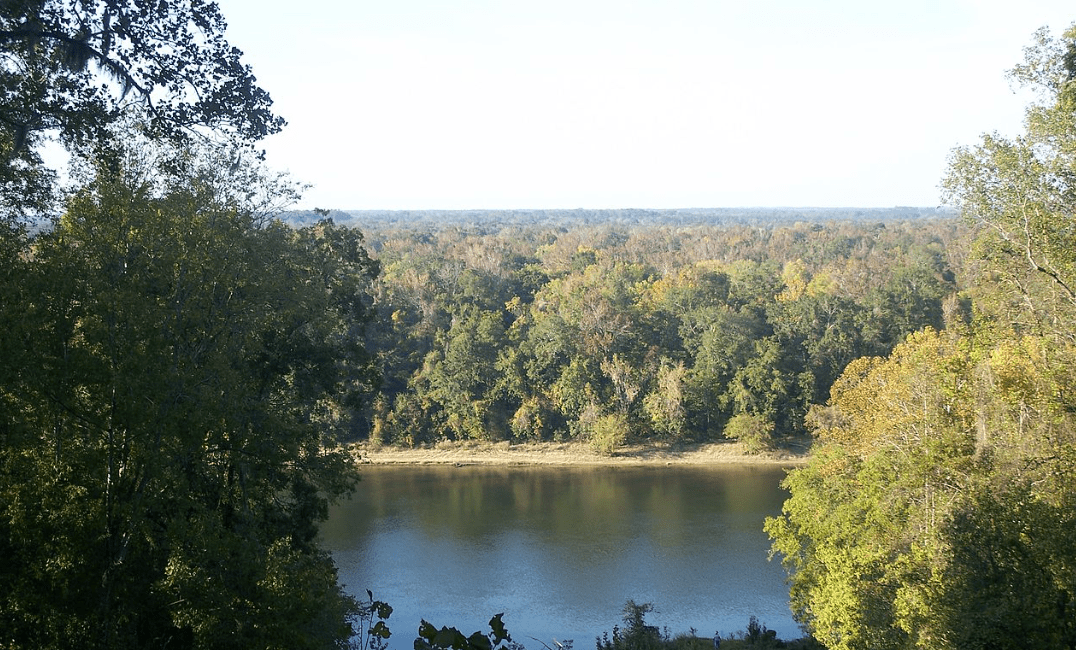
Torreya State Park is nestled in Florida’s northern panhandle, created in the 1930s as a nature preserve, but some say it houses a historical site of biblical proportions. One Baptist minister and former lawyer maintained for decades that this wilderness retreat was the literal site of the Garden of Eden from the Bible’s Book of Genesis. Flanked by the Apalachicola River and home to the now endangered Torreya tree, the park got new neighbors in 1956, when the minister founded a ‘Garden of Eden’ tourist attraction in the nearby town of Bristol, with rates of just $1.10 per ticket.
While many Biblical scholars and theologians have spent centuries speculating that a true ‘Garden of Eden’ once existed in Turkey, Armenia, or at the head of the Persian Gulf (where the Tigris and Euphrates Rivers meet), few have suggested Florida. But Baptist Reverend Elvy E. Callaway, then a retired lawyer, claimed that he had uncovered several geographical features of the local landscape that matched the description of the Garden of Eden as detailed in the Old Testament.
‘The Garden of Eden, east and west, is not over 10 miles wide, paralleling the (Apalachicola) River from Chattahoochee down to Bristol,’ as Rev Callaway told a reporter for WFSU-TV in 1972. At the core of his argument was a passage in the Book of Genesis that said, ’a river watering the garden flowed from Eden, and from there, it separated into four heads.’ By Rev Callaway’s analysis, this four-fold split only appears at two rivers on Earth, the Apalachicola or another tributary half a world away in Siberia. But Siberia, the former lawyer and one-time devout non-believer believed, was much too cold to be the paradise described in Genesis as the birthplace of humanity, according to one Florida reporter, Anthony Talcott.
In his 1971 book In the Beginning, Rev Callaway proclaimed that the Apalachicola’s four-headed river system ‘proves beyond all doubt that the Bible account is true and that the Garden was in the Apalachicola Valley of West Florida.’ However, the shape of the local river system was not the only feature of the land that guided the reverend toward his conclusion that this verdant plot in the panhandle was once the Eden of the Old Testament. The indigenous Torreya trees, which are among the rarest and oldest in the world, also swayed his thinking. The Torreya taxifolia, authentically primeval, had survived the previous ice age in what’s called a “pocket reserve” along the Apalachicola River,’ as Brook Wilensky-Lanford, author of the 2011 book Paradise Lust: Searching for the Garden of Eden, put it.
‘It’s a holdover from a now-vanished world that existed before a massive geologic event,’ she wrote in an article for Washington University’s Religion & Politics, ‘just as a survivor of Noah’s Flood should be.’ The already rare tree was becoming endangered by the 1950s due to disease and overharvesting — as the evergreen-like southern tree was used for everything from riverboat fuel to housing shingles to Christmas trees. Visitors to Rev Callaway’s park were treated to a 3.75-mile well-worn hiking trail, dubbed Garden of Eden Road and dotted by many specimens of the endangered Torreya tree. The minister said the enterprise was a ‘non-profit shrine.’
Rev Callaway passed in 1981, and today, his Garden of Eden trail can be hiked as part of the non-profit Nature Conservancy’s Apalachicola Bluffs and Ravines Preserve. And the nearly four-mile trek still includes a view of the Apalachicola River from Alum Bluff, the spot Callaway long claimed had once been home to Adam and Eve.
